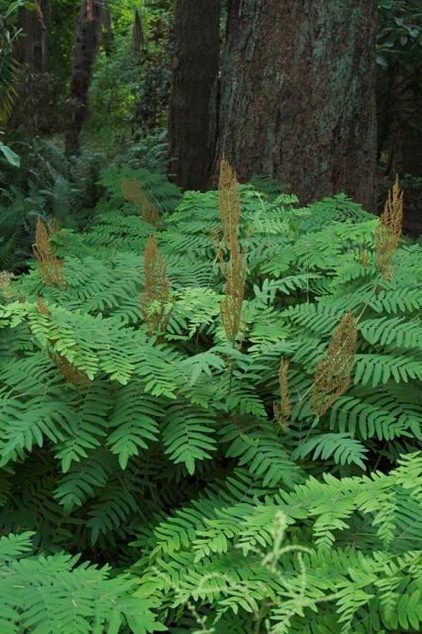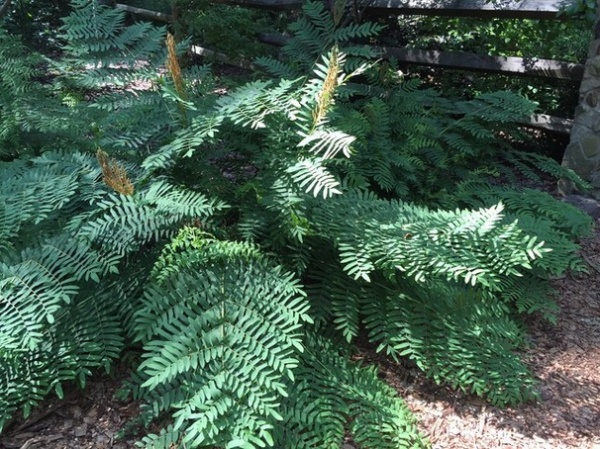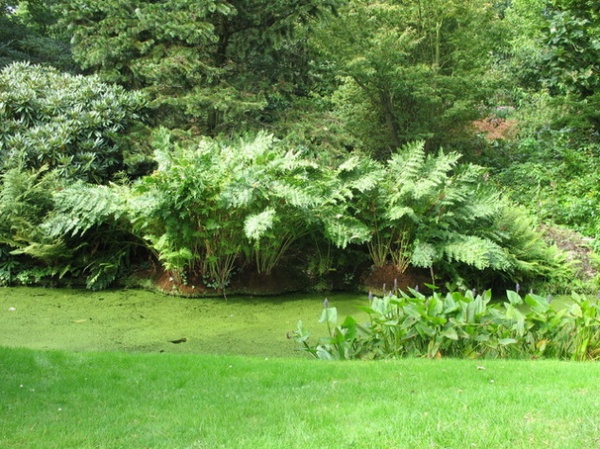Great Design Plant: Osmunda Regalis
http://decor-ideas.org 05/20/2015 00:13 Decor Ideas
Adjectives such as “diminutive,” “cute” and “dainty” are as common in the vocabulary of understory plants as crabgrass is in the summer lawn. Occasionally, however, around the bend of a woodland path, something spectacular and breathtaking lies in wait. Royal fern (Osmunda regalis) is one such plant.
Royal fern is tough yet delicate and is unique among ferns in that it is found, either living or fossilized, on all seven continents. It is, in fact, the only vascular plant on earth that can make this claim. It is, therefore, a native in the truest sense. Because of this, it should earn a place in your shade garden. Let’s see how to make this amazing fern our own.

Botanical name: Osmunda regalis
Common name: Royal fern
Origin: Eastern North America, Europe and Asia
Where will it grow: Hardy to -40 degrees Fahrenheit (USDA zones 3 to 10; find your zone)
Light requirement: Partial to full shade
Water requirement: Moist to wet soil
Mature size: 4 to 5 feet tall and wide
Benefits and tolerances: Resistant to deer, rabbits, insects and diseases; performs well in boggy, acidic soil and deep shade but is tolerant of partial sun if planted in wet soil
Seasonal interest: The fronds emerge as light green in midspring, darken by the beginning of summer, then turn yellow in autumn as the plant prepares to go dormant for the winter.
When to plant: Spring is best

Distinguishing traits. This giant fern, unlike other ferns, emerges with fertile leaflets attached to the end of its fronds. (Ferns generally either produce separate fertile fronds or produce spores all along the underside of the frond leaves.) The green spores found on these leaflets are capable of photosynthesis. Once the spores are released, these leaflets change to a golden color, resembling a tassel.
Royal fern fronds resemble locust or mimosa leaves, providing unexpected interest. This fern grows in a symmetrical clump and does not spread by rhizomes, so it is well behaved in the garden.

How to use it. Because of its large size and round growth habit, royal fern can be either used as a specimen plant in the shade garden or planted en masse for a dramatic effect, if you have the room. Give it space to spread out, since a happy royal fern can reach 5 feet in diameter. Royal fern is a prudent choice for boggy areas, where many other plants languish.
Planting notes. Site royal fern in moist to boggy, acidic soil in partial to full shade, or provide supplemental water (3 or more inches per week) if you plant it in average soil. This fern can take more sun if planted in very wet soil. Amending the soil with compost and mulching around the plant with a shredded hardwood mulch or leaves will produce the best growth.
More:
10 Solutions for Soggy Soil
Browse more Houzz gardening guides
Related Articles Recommended












